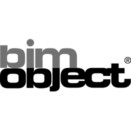- Automatic thermostat
- A type of thermostat that continually measures the room temperature and will automatically adjust the fire rate of gas fireplaces to maintain a constant room temperature.
- B-Vent
- A gas fireplace that draws air from inside the home through ports in the firebox itself. (also called Natural vent).
- BTU
- British Thermal Unit; a measurement of heat.
- Burner
- Device for the final delivery of gas to the combustion zone where the flame is produced.
- Carbon Monoxide (CO)
- An odorless, colorless, tasteless poisonous gas.
- Certified Chimney Sweep
- A licensed professional trained in the proper inspection and cleaning of fireplaces and chimneys.
- Chase
- An open recess in a wall at the base of a chimney where venting can be installed. Direct vent fireplaces do not need a true chimney since they use vent pipe.
- Chimney
- A vertical passageway used to vent smoke and vapors outside.
- Corner Unit
- A fireplace placed in the corner of a room.
- Damper
- A device used to reduce or close the opening between the firebox and flue.
- Direct-Vent
- A fireplace with a sealed glass door in which air exchange occurs in the vent pipe. The room air is exchanged around the fireplace body but does not mix with combustion/exhaust air.
- Electric Igniter
- A device to ignite the burner or pilot electronically.
- Fire box
- The chamber of the fireplace that contains the fire.
- Fire Screen
- A screen that sits in front of the fireplace opening.
- Flue
- A pipe or channel for moving smoke from the fireplace to the chimney.
- Front view
- A traditional fireplace that only offers a front view of the fire.
- Hearth
- The floor of the fireplace, which usually extends away from the wall.
- Heat exchanger
- A feature within the fireplace that moves heat generated from the firebox into a room.
- Insert
- A gas burner device inserted into an existing masonry or prefabricated wood-buring fireplace.
- KWH
- Kilowatt per hour (equals 1000 watts per hour). An energy measurement for electricity.
- Mantel
- A protruding shelf above the fireplace.
- Multi Burner
- Gas fireplaces can have a multi or single burner. With a single burner, you can either turn the gas on or off. With a double burner, you can turn on the left and right burners and the center burner, turn off the left and right burners while keeping the center burner on, and adjust the flame height. A multi burner unit allows you to add drama to your fire!
- Multi-view
- A fireplace that offers multiple views or open sides.
- Peninsula fireplace
- A fireplace with three open sides built into a half or partial wall.
- Pilot light
- A small gas flame that ignites the main burner to produce fire in the gas fireplace.
- Remote control
- A device used to control a fireplace from a distance.
- See-through fireplace
- A fireplace placed within the wall between two rooms and that is visible from both rooms.
- Standalone fireplace
- A freestanding fireplace that is open on all 4 sides (also called an island fireplace).
- Standing pilot light
- A pilot light which remains on.
- Standing safety pilot
- A manual or remote controlled gas valve which shuts off the gas supply if the pilot light is extinguished.
- Therm
- A unit of heat equal to 100,000 British thermal units; normally used as a measurement for natural gas.
- Top-Vent
- A fireplace in which air exchange occurs through the top of the fireplace or stove.
- Variable setting control
- A control feature of gas fireplaces which allows you to manually adjust the heat output of your fireplace by controlling the fireplace’s gas consumption rate.
- Ventless
- A fireplace that requires no venting as the combustion is maintained within the system (also called Vent-free).











